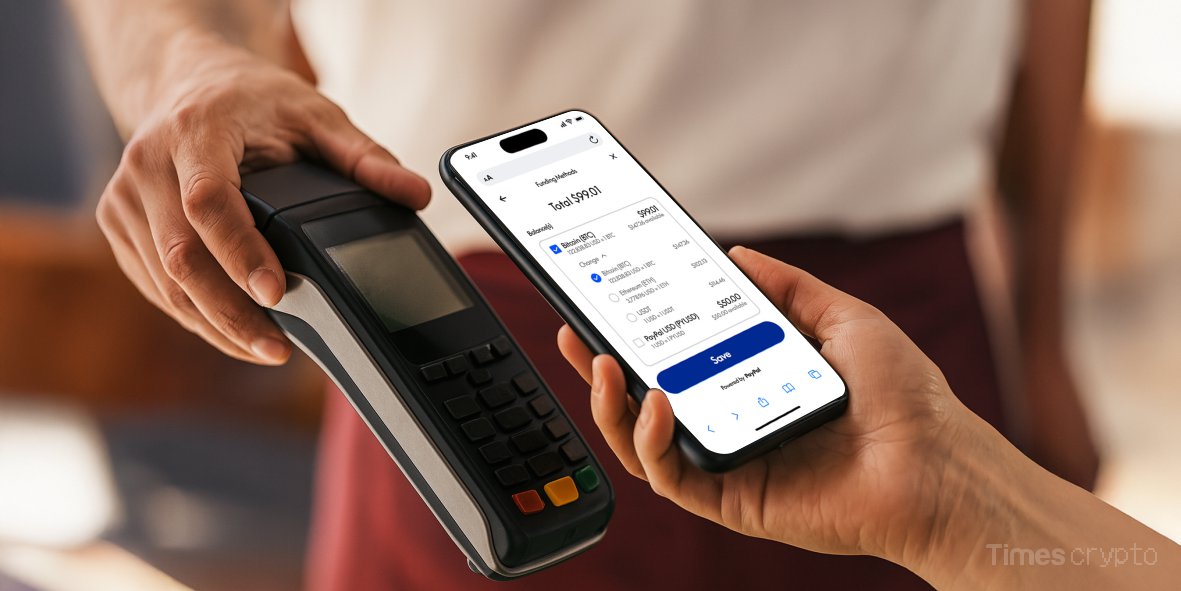Table of Contents
Key Takeaways
- PayPal’s new “Pay with Crypto” feature supports 100+ digital assets (BTC, ETH, SOL, XRP, among other cryptos) and major wallets like MetaMask and Coinbase.
- Merchants pay just 0.99% fees (vs. credit cards’ 1.5-3.5%) and receive instant PYUSD or fiat conversions, with no volatility risk.
- The move follows the GENIUS Act, signaling growing regulatory acceptance of crypto payments.
From Niche to Norm: PayPal’s Crypto Gambit
Twenty-five years after changing the way we pay online, and after a few years of reluctance, PayPal is now betting big on crypto, not as speculative buying and selling, but as everyday money. The new “Pay with Crypto” tool, rolling out to U.S. merchants this month, allows customers to checkout with everything from Bitcoin to Dogecoin, automatically converting it to PayPal’s stablecoin (PYUSD) or local currency.
The math is simple: if a Guatemalan buyer shops at an Oklahoma store, they can now avoid 3% cross-border card fees, paying just 0.99% instead. For small businesses, that’s the difference between profit and loss on international sales. It’s clear that this is no more about crypto speculation, but about solving real commerce pain points.
How The “Pay with Crypto” Feature Works: The Fine Print
- For Shoppers: With the “Pay with Crypto” feature, they can now connect any supported wallet (E.g., MetaMask, Coinbase), select their preferred crypto at checkout, and PayPal will handle the conversion.
- For Merchants: They’ll receive payments as PYUSD (earning 4% APY if held) or cash, with settlements 90% faster than traditional banking systems.
- The Catch: New Yorkers are excluded [pending New York State Department of Financial Services (NYDFS) approval], and refunds may be tricky with irreversible blockchain transactions.
The system is highly reliant on PYUSD, PayPal’s dollar-backed stablecoin that is up 80% this year and has a current market cap of $936M. We all know that there are always some detractors who may be thinking this creates a “walled garden. On the other hand, supporters can think that seamless conversion to fiat is essential to bring crypto into mainstream adoption.
Crypto’s Inflection Point
PayPal, with its impressive 435 million active accounts, is moving to bridge the gap between crypto and commerce. This initiative mirrors similar cases like Stripe and Coinbase, but PayPal holds a distinct advantage due to its vast user base. This development also coincides with the GENIUS Act, offering clearer stablecoin regulations and providing a favorable regulatory environment.
However, challenges are always there:
- Volatility: While conversions protect merchants from price fluctuations, shoppers remain exposed to crypto’s inherent price volatility.
- Adoption: It remains to be seen whether smaller businesses will readily adopt one more payment method.
- Competition: MasterCard and Visa’s crypto division is also discreetly exploring and testing similar solutions.
The Bottom Line
For merchants and buyers, this is more than just another “Pay with Crypto” product; it’s a critical test to see if blockchains can actually replace traditional payment systems. PayPal’s success would likely trigger widespread adoption among fintech firms. But if it fails, could it further undermine the narrative of crypto’s practical “real-world use case”?
Final Thought: Would you pay with crypto if given the option? For some, this doesn’t matter. They don’t care if it’s Bitcoin or bananas; if it saves them fees, they are all in.
For more PayPal-related stories, read: PayPal Expands PYUSD to Stellar: $1B Stablecoin Targets Global Payments



